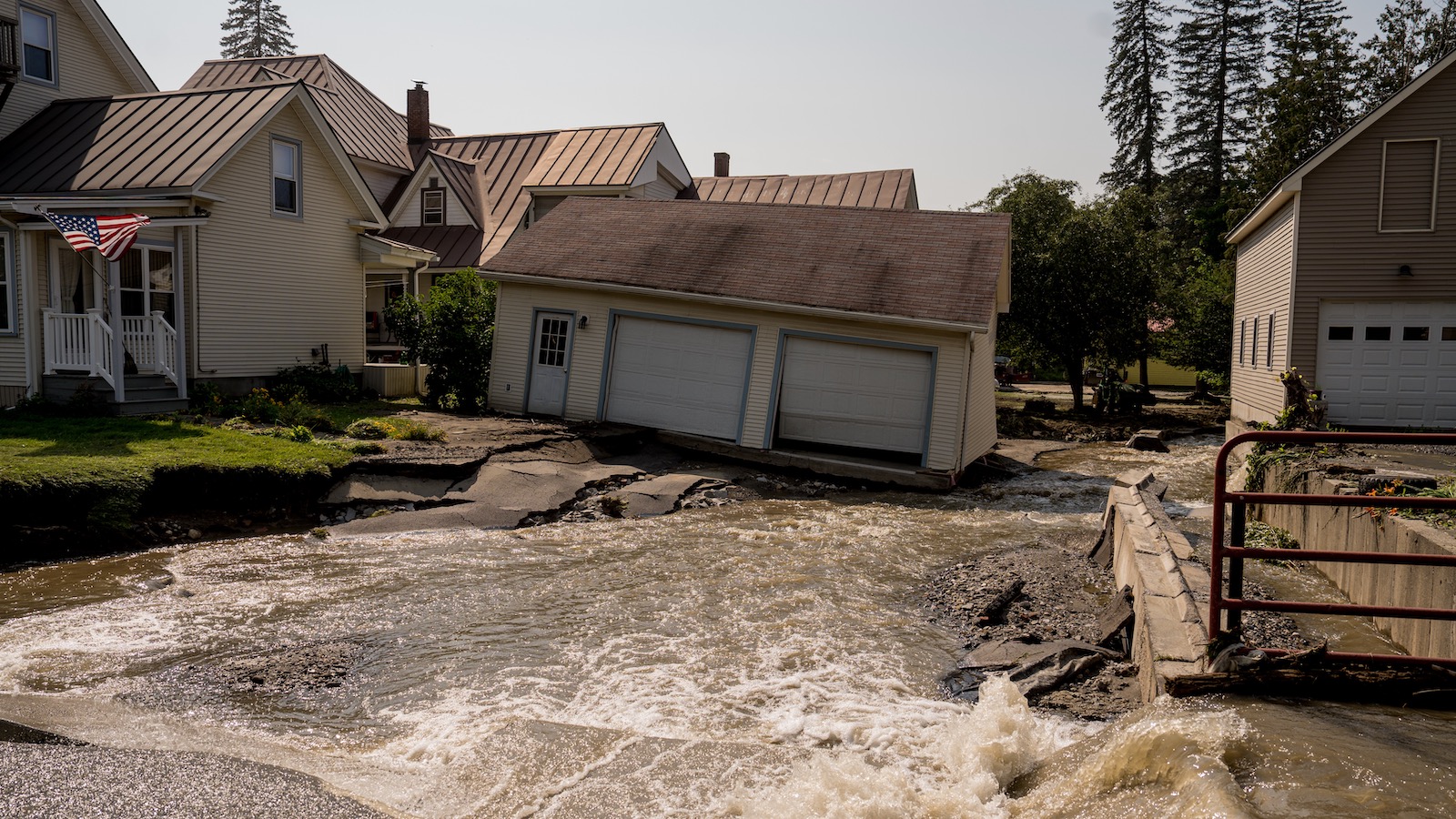Congress produced the National Flood Insurance Coverage Program in 1968 as a method for the federal government to bear a danger that personal business would not. Ever since, Uncle Sam has actually backed the large bulk of flood insurance coverage in the United States.
Yet it is difficult to purchase or restore such strategies straight with the Federal Emergency Situation Management Company, or FEMA, which administers the program. Rather, the federal government trusts a network of personal business to offer and service its policies– and hands them almost one-third of the premiums the program generates. Recently, that’s pertained to practically $1 billion a year.
” It is definitely something that needs to be taken a look at,” stated Stephen Ellis, president of the guard dog company Taxpayers for Sound judgment. “It would be something if it were a really high carrying out program. Definitely that’s not held true.”
The federal government’s flood insurance coverage program is pestered by low-participation rates and is deep in financial obligation. How its run has actually typically drawn analysis, and previously this year, a bipartisan group of legislators proposed legislation that would, to name a few things, cap the payment paid to personal brokers, who do not handle any danger. There likewise have actually been require FEMA to offer policies straight to customers. Supporters of such modifications state they would make it much easier, and possibly less expensive, for homeowner to get protection, while conserving taxpayers cash.
” Flood insurance coverage is a federal government service,” stated Rob Moore, director of the Water & & Environment Group at the Natural Resources Defense Council. “Individuals need to have the ability to purchase it straight from FEMA. No concern.”
FEMA and insurer state it isn’t rather that simple.
The National Flood Insurance Coverage Act of 1968 developed the National Flood Insurance Coverage Program, or NFIP, to fill a space as the economic sector pulled away from the marketplace. 5 years later on, Congress mandated that property owners in high-risk locations who have a federally backed home mortgage purchase appropriate protection. In 1979, President Jimmy Carter designated FEMA the function of supervising the NFIP. However insurance coverage uptake stayed fairly low
In 1983, FEMA got personal insurance coverage representatives in the effort to offer more policies. The federal government accepted compensate the expense of composing policies and processing claims. The hope was that enabling property owners to utilize the exact same representatives that offered other kinds of insurance coverage would improve involvement.
As lots of business signed up with the so-called Write You Own, or WYO, program, flood insurance coverage registration certainly grew. However the variety of policies peaked in 2009, at 5.7 million, and has actually been decreasing considering that.
” Even with personal insurance coverage engaged, and marketing, it still sits best around 5 million policies,” Ellis stated. (Since 2022, the figure is 4.7 million.) That’s a portion of the approximately 100 million qualified homes.
In Between 2017 and 2022, the NFIP paid brokers $ 5.82 billion in commission and cost repayments That’s almost 29 percent of all premiums generated by the program, which is burdened financial obligation and loses billions of dollars yearly. Decreasing that cut by even a portion point might conserve millions. However the Federal Government Responsibility Workplace, or GAO, has on a minimum of 2 celebrations critiqued FEMA’s technique to compensating brokers.
” FEMA sets rates for paying WYOs for their services without understanding just how much of its payments in fact cover costs and just how much approaches revenue,” the nonpartisan company kept in mind in a 2009 report 3 years later on, Congress directed FEMA to review its payment formula. However a 2016 GAO report discovered that had not yet taken place and suggested that FEMA “enhance the openness and responsibility over the payment paid to WYO business and set proper payment rates.”
The GAO still notes that suggestion as “unsettled,” and it stays uncertain just how much FEMA is over- or underpaying brokers. While the GAO discovered that some were not being compensated for all of their costs, a 2019 FEMA rulemaking proposition kept in mind that the 30.8 percent payment rate that the company pays them is well above the 25.3 percent in real costs they reported to a market trade group. The distinction is most likely revenue, which might total up to numerous countless dollars.
FEMA informed Grist it has actually finished the congressionally mandated analysis of broker payment, however decreased to share information due to the fact that it’s under internal evaluation.
What is understood is that in 2023, FEMA accepted pay WYOs 29.7 percent of premiums That is greater than the 20 percent cap that the Affordable Care Act usually puts on the administrative, overhead, and marketing expenses of medical insurance offered through the federal government market. It is likewise proportionally more than the 14 percent in cost payments that the Department of Farming has actually been offering business to offer and service crop insurance coverage for the last 5 years (the business likewise get extra payment as revenue due to the fact that, unlike WYOs, they handle crop insurance coverage danger).
Roy Wright, who led the NFIP from 2015 to 2018, states such contrasts aren’t comparable due to the fact that those programs are much bigger. That enables considerably lower overhead, he stated. Still, he sees space for enhancement.
” The operating expense have actually been the topic of a reasonable quantity of dispute,” stated Wright, who is now the president of the Insurance coverage Institute for Service & & Home Security. “I constantly believe we need to take note of how dollars are invested.”
One effort to check expenses was available in June, when a bipartisan group of legislators presented an NFIP reauthorization act that would, to name a few things, cap the payment paid to personal brokers at 22.46 percent. That would have conserved the NFIP numerous countless dollars in 2015 alone.
” Why is this 30 percent so sacrosanct, when there’s the capability to do it for less?” stated one Democratic Senate assistant. “We have actually lost service, and we’re still compensating them in the exact same method.”
Up until now, little has actually occurred with the costs.
Looking beyond the matter of just how much FEMA is paying brokers, some wish to see the company engaging with customers straight. That, they state, might cut expenses while probably enhancing gain access to and openness.
” Every intermediary includes another action in the chain of telephone,” stated Moore. “If more individuals purchased straight from FEMA, there are some concrete advantages to the flood insurance coverage programs.”
FEMA does run a program called NFIP Direct, which enables insurance policy holders to pay and file claims It is rather comparable to how the program ran before WYOs, other than that today customers should still purchase a policy through a broker, who makes a 15 percent commision. According to the Senate assistant, NFIP Direct’s general costs have to do with 22.46 percent, or the number proposed in the legislation.
” This is an example of where the federal government is more effective than the personal market,” the assistant stated.
Still, NFIP Direct just consists of about 1 in 10 policies. That’s at least in part due to the fact that representatives have very little rewards to offer them, stated Joe Rossi, a broker who chairs the Flood Insurance coverage Producers National Committee. Representatives usually discover it much easier– or are needed– to deal with personal insurance providers they currently have relationships with. Doing so likewise can bring more in commissions.
” The WYOs are not limited in just how much they provide to their representatives,” Rossi stated. “There are firms that provide 20 percent or more.”
The market argues that representative competence is crucial to assisting customers browse a complex subject stuffed with concerns like, state, whether getting an elevation certificate may minimize premiums.
” The representative is the NFIP whisperer, if you will,” stated Lauren Pachman, director of regulative affairs for the National Association of Expert Insurance Coverage Agents. She included that any cuts in federal government payments to insurer would probably effect representatives’ commissions, which would make it harder to bring in and maintain them. The variety of Write Your Owns has actually currently been dropping, she kept in mind. “Providers do not make a lots of cash on the flood program.”
Less economic sector participation would need NFIP Direct to handle more of the problem– a result that stresses her. “I think it’s difficult for me to picture the NFIP operating like a well-run insurance provider,” she stated. “I fret that the federal government would be biting off more than it can chew.”
However, FEMA states it wishes to attempt to move better to clients and is establishing a “direct to customer” online flood insurance coverage estimating tool that it intends to have running by April 2025. In its preliminary ask for info, which Grist got, the company called a digital ways of selling and maintenance policies “necessary” and stated, “Flood insurance coverage stays behind the times, causing possible client aggravation and the failure to safeguard one’s home or service.”
The hope is that repairing those problems will lead more individuals to register.
” If we’re major about closing the insurance coverage space, we need to get more in tune about satisfying our clients where they are,” stated David Maurstad, senior executive of the National Flood Insurance Coverage Program. “What this would do is lead individuals through the procedure, at the end of which, if they choose they wish to purchase a policy, then we link them with a representative who deals with protecting their policy.”
Maurstad did not state whether the brand-new system would conserve the program cash, however kept in mind that bypassing personal brokers would at the least be a logistical difficulty, due to the fact that insurance coverage is managed at the state level. The option would need FEMA to determine how to have actually internal representatives signed up in every state.
” My sense is that that would not be as reliable as the co-system that currently exists,” he stated. “It was chosen a variety of years back, and it still makes good sense today, to utilize the economic sector and their abilities to administer the program on behalf of the federal government.”
Wright concurs that many people would most likely take advantage of expert assistance when purchasing flood insurance coverage, however supports FEMA making more info quickly and easily offered to customers. FEMA currently has actually the innovation required to, state, enable somebody to get in an address and get the answer to the majority of their concerns, he stated: “They need to discover a method to turn it on.”
Whether NFIP can conserve cash by moving more of the flood insurance coverage procedure in-house is an open concern, stated Wright. However to the degree that there are cost savings, he stated they need to be handed down to the policy holders.
” If the expense of the insurance coverage has actually decreased,” he stated, “the customers need to benefit.”


